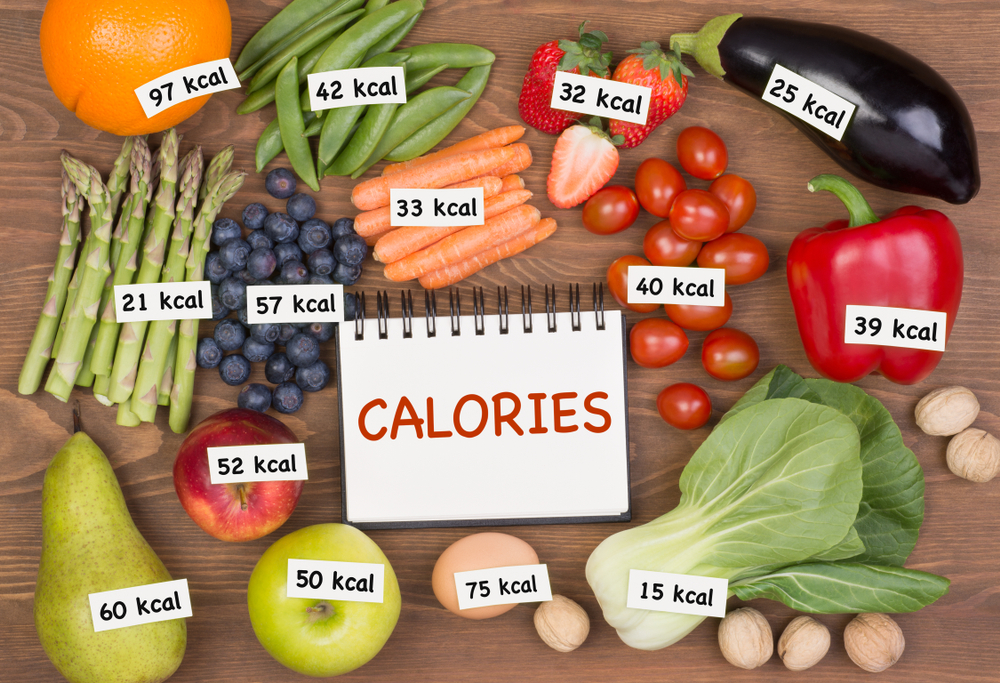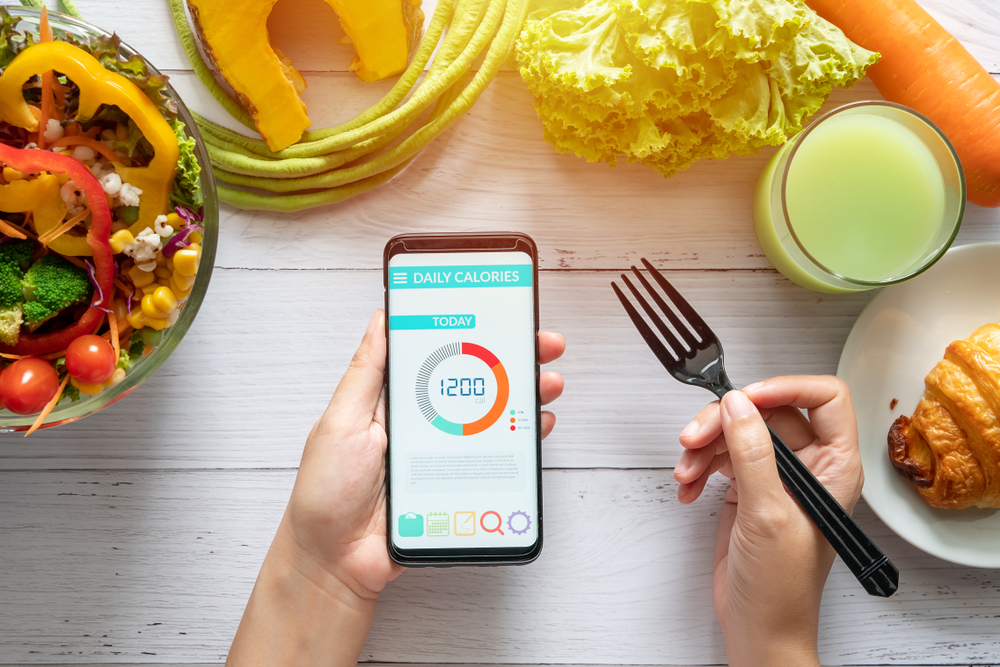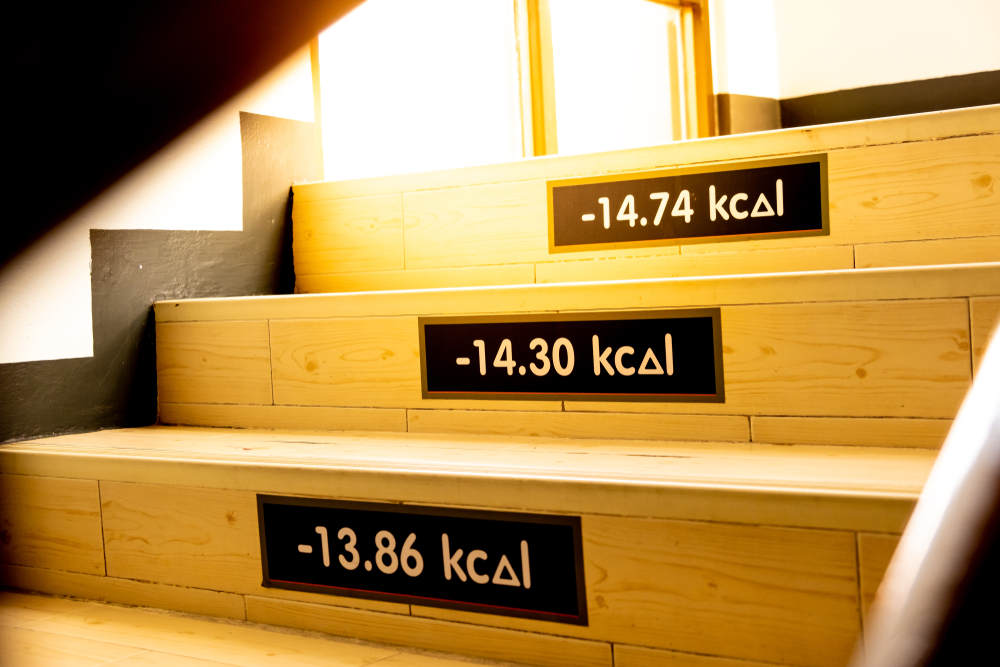Weight loss and weight gain are two very hot topics. Basically, if you want to lose weight, you will need to consume fewer calories than you expend and if you want to gain weight, you will need to consume more calories than you expend.
Calculating your calorie intake is the first step towards your goal. In this article, we will explain what calories are, what their limitations are, and present you with a calorie chart of some everyday foods.
The role of calories
A calorie is a unit of energy that is equal to the amount of energy needed to raise the temperature of one gram of liquid water by one degree. Today, it is mainly used in nutrition to calculate the energy intake of each food and the calorie expenditure that each physical activity represents.
Calories provide us with the energy we need to cover our physiological needs (including breathing, thinking and moving) and the amount you need depends mainly on your gender, weight, metabolism and lifestyle.
For example, 30 minutes of running represents an average expenditure of about 210 kcal for a 60 kg woman and 300 kcal for an 80 kg man. In any case, the more physical activity you do, the more calories you need.
The three macronutrients that provide calories are fat (9 kilocalories per gram), carbohydrates (4 kilocalories per gram) and protein (4 kilocalories per gram).
Expending fewer calories than you consume will result in excess calories being stored in your body as fat or in muscle tissue.
Note that hormones can also play a role in weight gain. For example, excessive stress can release cortisol into the body, which can lead to fat storage, especially in women.
How to easily calculate your calorie intake?
There are many mobile applications that allow you to calculate your calorie intake in a simple and convenient way.
You simply add each food item you eat by writing the name of the food or scanning the barcode of the product in question.
The application will then automatically calculate your daily calorie intake and macronutrient ratio (fat, carbohydrates and protein).
Although this calculation is quite accurate, it does not replace the help of a medical nutritionist who will not only calculate your daily calorie intake accurately but also analyse your results and improve your eating habits.
Limits of the calorie calculation
Calorie counting can be very useful if used properly, but this indicator is not sufficient. If you want to lose weight, for example, calorie restriction will not be effective if your diet does not promote the consumption of micronutrients (vitamins and minerals), which are essential for the proper functioning of your body.
It is therefore clear that not every calorie is worth the same, which is why calories that provide very few micronutrients are often referred to as "empty calories".
Maintaining a good macronutrient ratio is another key factor to consider when calculating your calorie intake.
Nutritionists generally recommend that your calorie intake should be split between: 45-55% carbohydrate, 25-35% fat and 15-25% protein.
Finally, the calculation of calories as such has little meaning if it is not linked to the concept of satiety. A slice of white bread and its caloric equivalent in oatmeal each give you 100 kcal, but the amount of fibre in oatmeal is much higher than in a refined product like white bread.
So you will feel hungry again much sooner if you eat white bread rather than oats, while having consumed the same amount of calories.
Similarly, you might think that fat, which provides 9 kcal per gram, is more fattening than carbohydrates, which provide only 4 kcal per gram.
However, fat has a strong satiety effect and it is unlikely that you will eat the same amount of fat as carbohydrate, which contradicts this theory.
Example of calorie intake from certain foods
The table below gives details of the calories, carbohydrates, fat and protein in grams for the following ingredients: vegetable macedonia, fruit macedonia, monkfish or anglerfish, dates deglet nour, chocolate yoghurt, cooked wine 12 cl glass, orange oasis 25 cl glass, chocolate cake, fruit jelly, hake or hake, horse steak, beef steak, roast veal, smoked ham pork, veal escalope, pork loin, beef loin and veal ribs.
| Food | Calories (kcal) | Carbohydrates (g) | Fat (g) | Protein (g) |
| vegetable medley (100 grams) | 36 | 7 | 0 | 1 |
| fruit medley (100 grams) | 44 | 8 | 0 | 3 |
| fruit jelly (100 grams) | 267 | 70 | 0 | 0 |
| 5 dates (40 grams) | 120 | 24 | 1 | 1 |
| chocolate yoghurt (1 x 125 gram pot) | 83 | 11 | 3 | 4 |
| chocolate cake (100 grams) | 154 | 18 | 7 | 4 |
| orange oasis 25 cl glass | 1 | 26 | 0 | 0 |
| wine 12 cl glass | 127 | 10 | 0 | 0 |
| codfish or monkfish (100 grams) | 67 | 0 | 0 | 16 |
| hake or hake (100 grams) | 72 | 0 | 0 | 17 |
| Salmon (100 grams) | 207 | 0 | 12 | 22 |
| beef steak (100 grams) | 115 | 0 | 3 | 23 |
| veal roast (100 grams) | 138 | 0 | 3 | 28 |
| smoked ham pig (100 grams) | 149 | 1 | 8 | 18 |
| veal scaloppine (100 grams) | 151 | 0 | 3 | 31 |
| Pork loin (100 grams) | 173 | 0 | 6 | 27 |
| beef loin (100 grams) | 257 | 0 | 17 | 21 |
| veal ribs (100 grams) | 228 | 0 | 14 | 24 |
| chicken leg (75 grams) | 127 | 0 | 5 | 19 |
| cooked lentils (100 grams) | 116 | 20 | 0 | 9 |
| baked black beans (100 grams) | 104 | 14 | 0 | 8 |
| cooked beans (100 grams) | 95 | 11 | 1 | 7 |
| banana (100 grams) | 89 | 21 | 0 | 1 |
| apple (100 grams) | 56 | 14 | 0 | 0 |
| milberries (100 grams) | 53 | 10 | 1 | 1 |
| tomato (100 grams) | 19 | 2 | 0 | 1 |
| milk (100 grams) | 15 | 1 | 0 | 1 |
| avocado (100 grams) | 155 | 3 | 14 | 2 |
Conclusion
The calorie chart above will help you get an idea of the caloric intake of some everyday foods as well as their macronutrient ratios (fat, carbohydrates and protein).
If you want to gain or lose weight (add link to article 33 diet plan weight loss), calculate your calorie intake and expenditure (add link to article 51 calorie expenditure table) using a mobile app or a nutritionist.





